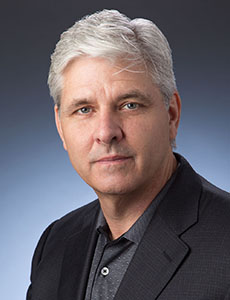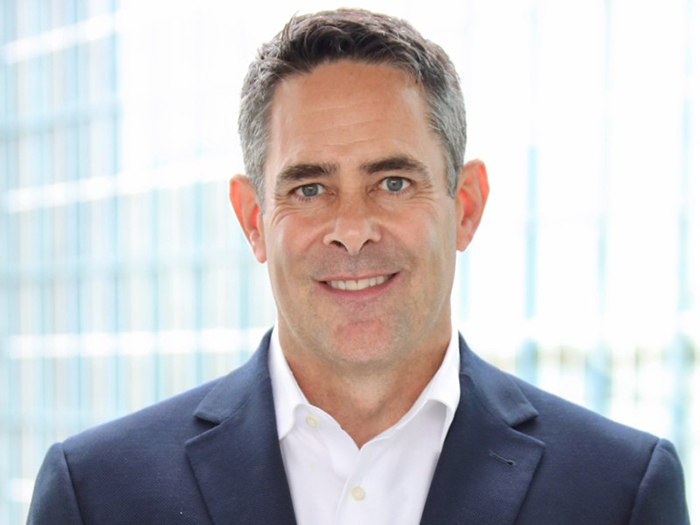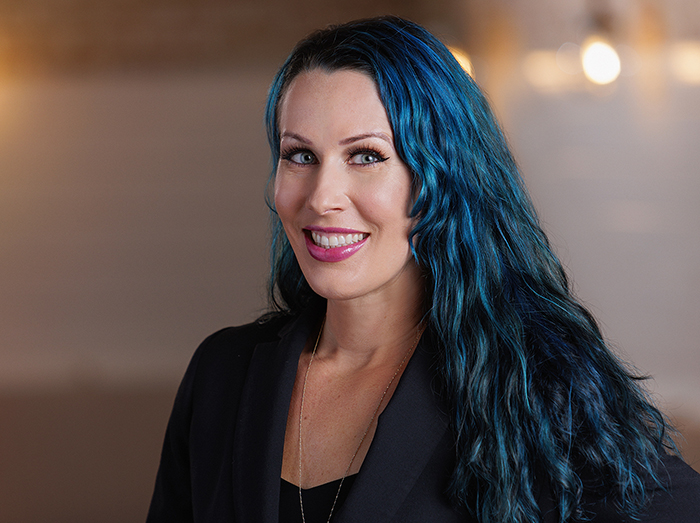Workers’ Comp Is Ripe for True Digital Transformation and Integration

It’s no secret that there has historically been somewhat of a technology lag in the workers’ compensation health care space. “But that is all about to change,” said John deLorimier, Executive Vice President of Customer Growth & Experience at Concentra.
For all the challenges that the pandemic brought, it did manage to accelerate the timeline for a more tech-centric approach to workers’ comp care. Even so, lingering post-pandemic pains – like labor shortages and an influx of inexperienced employees into the workforce – continue to stretch employers, payors, and clinicians to their limits.
These issues aren’t going away any time soon, and with workplace injury rates climbing toward pre-pandemic levels, it’s time to work smarter – not harder. And, as we all know by now, there’s no better tool for doing so than technology.
deLorimier reminds us of the oft-used phrase in business, “Everyone is a salesperson.” Now, he says, everyone is – or needs to be – a technologist. Where IT departments were once primarily supportive entities, going forward they should be embedded into an organization at every level – driving not only how a company operates, but leading the way in business innovation and best practices as well.
Occupational health providers are no exception. With cutting-edge technologies and a wealth of data at their fingertips. deLorimier says the scene is set for improving case outcomes, optimizing operational efficiency, boosting top-line revenue, and – of particular importance – “delivering a better overall experience to our customers and patients.”
It’s All About Connection
There are five key efforts that Concentra is focusing on in its commitment to improving outcomes and journeys via technology, all of which rely on the concept of digitizing workflows and experiences.
But first, as deLorimier explained, it is important to understand some of the problems this industry faces, like redundancy, wasted time and effort, unnecessary spending, and inconvenience. According to McKinsey & Company, up to a trillion dollars of the money spent on health care in the United States goes toward administrative tasks alone.¹
Now, how can a digitized workflow help to solve some of these problems? The experts at McKinsey & Company analyzed their findings and identified 30 potentially cost-saving interventions, the majority of which involve technology or digitization in one form or another.
Automation, simplification, integration, accessibility, and streamlining – all of which are made possible by a digitized workflow – emerge as critical focus areas for reducing “waste,” cutting costs, and – ideally – enhancing experiences and outcomes.
deLorimier gives the example of a traveler calling their hotel to request connecting rooms for an upcoming reservation. When calling the number listed online, the traveler reaches a corporate call center for the hotel chain.
The agent is unable to see whether that specific location has connecting rooms available, so the call is transferred to the hotel itself. Unfortunately, the call was routed to the concierge – who does not have access the reservation system and its data – so the traveler is again transferred, this time to the front desk.
Once the traveler has reached the appropriate desk agent, he must explain – for the third time – the reason for his call. When the traveler arrives two weeks later, it is discovered that the desk agent mistakenly entered the room request under another guest’s reservation.
“This happens everywhere – in every industry – and all of us have had such experiences,” said deLorimier, “but we now have the tools and the opportunity to break this cycle.”
By integrating systems and sharing data throughout an entire ecosystem, almost any process or journey can be dramatically simplified for all parties involved.
Time and money can be saved. Human error can be avoided. People can have easier, more enjoyable experiences. In workers’ comp cases, outcomes can improve. Employees can get back to work sooner. It’s all about accessibility and connectivity, and that is what deLorimier and his team are working toward.
IDC – a global market intelligence firm – agrees with this thought process, releasing a list of essential guidelines for enhancing patient experiences and engagement, one of which encourages providers to “Deploy open architectures, API-enabled sharing, and interoperability within your enterprise, and extend it to others in the ecosystem as demanded.”
Reiterating the importance of this approach, IDC reminds readers that, “A 360 view of an individual’s data is the key to seamless interactions with consumers/patients.”²
As Simple as a Handshake
To help people understand digital connectivity and its benefits at a more fundamental level, deLorimier paints the picture of a virtual handshake. Concentra will provide real-time data sets in the cloud, supporting key business workflows, that comprise data from various internal systems.
Using bi-directional application programming interfaces (APIs) – a software that allows application-to-application communication – others in the ecosystem who may need access to certain data in Concentra’s data set, like payors working on claims, will be able to quickly receive translated data that is usable within their own systems.
Also, Concentra will be able to receive data updates from partners using this same interface. You can think of it as two people who speak different languages meeting in a secure location, the cloud, and using a translator, the API, to communicate, deLorimier said.
At the moment they shake hands, the API pushes the data from the cloud, translates it to the common language, and delivers it – and this all happens within seconds.
The Keys for Change
Concentra’s technology-driven charge to improve experiences and optimize outcomes relies on five key focus areas. The first is data transformation. If data is going to be shared in a useful and meaningful way, it needs to be clean, high-integrity, high-quality data.
“We are working on this right now,” said deLorimier. Next is improving legacy systems. This may mean reworking a user interface, upgrading outdated systems, or transitioning to a new, more functional platform.
The third is digitizing workflows. For a medical practice, this includes simplifying the authorization and check-in processes, cutting down on paperwork, and ultimately allowing the clinician to spend more time actually treating the patient.
A digital workflow can also help on the employer side by expediting the delivery of results. Automation is critical for this piece of the puzzle. Number four is, as deLorimier puts it, “just being easier to do business with.”
He added, “Anyone who wants to get a hold of us will be able to – in the way they want to – and get the information they want.” This will require a secure, cloud-based system and an omni-channel approach.
A Layered Approach to Better Outcomes
The fifth key is layering machine learning and artificial intelligence (AI) over this new level of data connectivity in order to identify irregular cases before they become outliers.
According to deLorimier, Concentra currently uses five primary benchmarks to determine which cases have the potential for an unfavorable outcome, but he is certain there are more to be uncovered with the help of advanced technologies and shared data.
“Now, what if we use machine learning and AI to find eight or nine other benchmarks – things we might not have otherwise recognized? Because now, we’re pooling our data and we’re seeing things a little more clearly.
“Looking at it through an AI lens, we can find those benchmarks. Now we can be much more prospective in our view of what’s going to impact that patient and get them back to life and to work faster.”
The Road Ahead
deLorimier says he expects to see significant transformation in the next 10 years. “Getting there is heavy lifting,” he adds, “but people are starting to make the jump – actively planning, budgeting, and strategizing for digitization and data sharing.”
“I think everybody’s at the starting gate and steps are being taken. There’s nothing yet that’s tangible enough for people to say, ‘We’ve cracked this code.’ But these are definitely the types of things that are being worked on right now. A number of large payor organizations are actively exploring these technologies as well,” deLorimier added.
“In our engagement, we’re trying to reach out and connect our ecosystems, find out where we can work together, and actually share data. I truly believe this is going to be a necessity. Everybody in the organization must be thinking about how technology can improve workflows and processes – and also how it will ultimately impact the injured employee,” he said.
A fan of analogies, deLorimier concludes with one more – and it’s perhaps the most compelling of all. “We all live in houses,” he said. For those of us who live in 30-year-old houses, it’s time to think about making some improvements.
The foundation and the “bones” of the house can’t be changed – but we can rewire our systems, install new technologies, and turn a 30-year-old house into a modern, efficient, and integrated “smart home,” he explained.
Lights can be turned on and air conditioning can be adjusted with the click of a button, the refrigerator can “talk” to your online shopping list when you are low on milk, and electrical panels can be accessed and serviced by a remote technician.
The same is true in occupational medicine. The foundation of what we do – seeing patients, treating injuries, getting employees back to work – remains the same and provides the structure upon which we continue to build, but it’s time to embrace technology and all that it can do in our space, starting with improving the experiences of our patients and customers.
“What technology should be doing right now,” deLorimier said, “is adding to the value proposition of the enterprise and making the enterprise easier to do business with for vendors, partners, employers, and their employees.
“Technology can’t be in the background anymore. It has to be out front, creating solutions that will differentiate the organization. I can’t emphasize that enough.” &
1. “Administrative simplification: How to save a quarter-trillion dollars in US healthcare.” McKinsey & Company. October 20, 2021
2. The Individual Healthcare Experience: Framework and Tool Kit. IDC. October 2020











